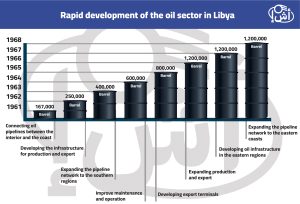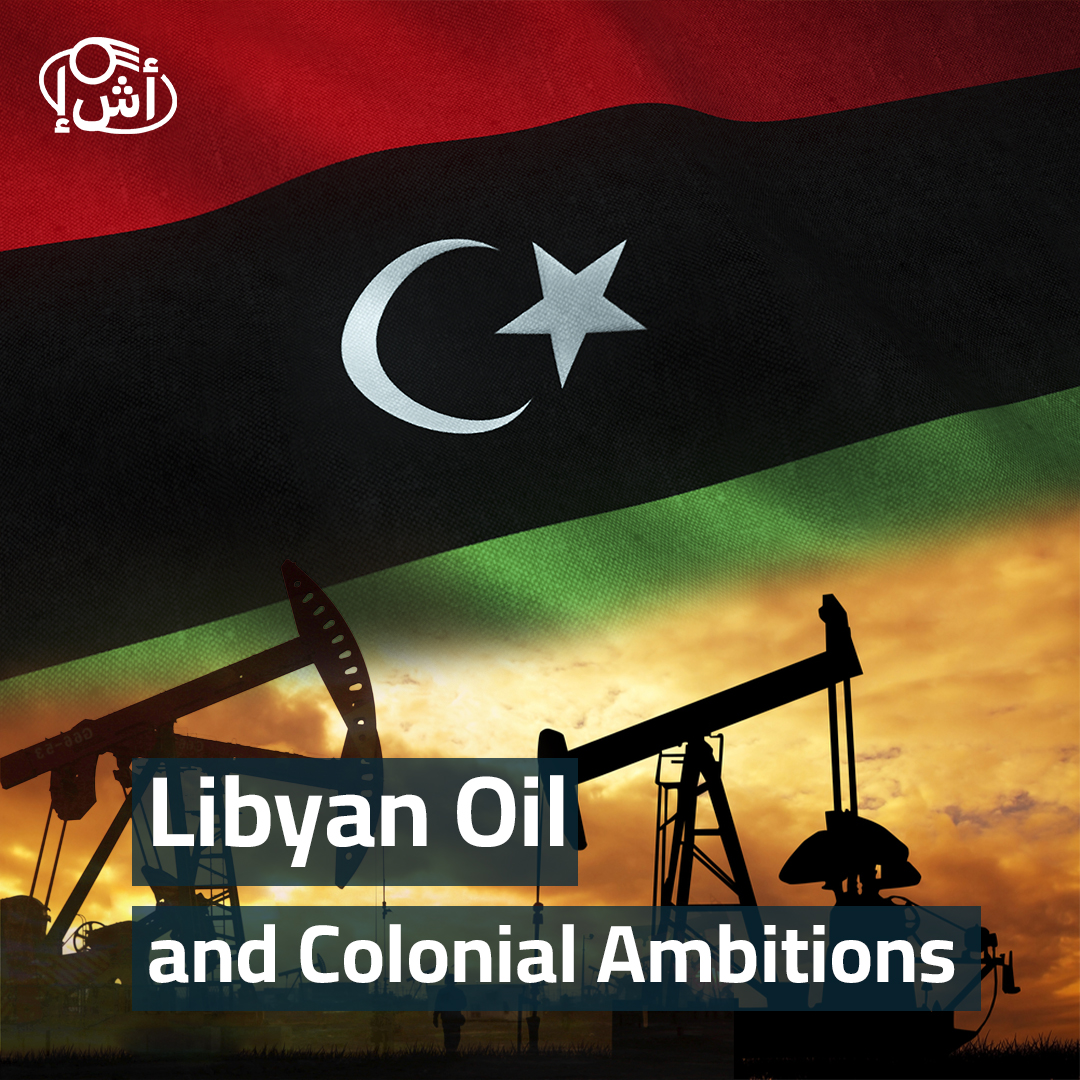Since the end of the fifties, oil has reshaped Libya’s political history, with the former Libyan colony transformed from a coast that is the closest point to Europe to a meeting point for the energy struggle.
Libya in the heart of North Africa seemed to be a space for the possibilities that await the forms of the modern economy, and its reserves discovered in the fifties of the last century painted shadows for a future of challenges, Libya’s journey through the eras of exploration and investment practically wrote the course of the event since 1958 when the first oil field was discovered, and this event represented the beginning of an era that saw Libya rise to a pivotal position on the stage of international competition.

The first signs of black gold appeared in the deserts of Ziltan, and the image of Libya changed through the oil lines linking the interior regions with the coast, away from the economy, these pipelines had a role in bringing the country together around political centrality despite the federal form that appeared after independence, Libyan oil, which is characterized by its lightness and quality, turned into a double economic and social factor, and made it difficult to see Libya according to an image in which the East is not interconnected with the West, and this matter was essential and turned the Senussi monarchy into a state Federal then a unified state in 1963. The international oil companies that reached it formed a set of interrelated interests between the investing companies, such as the Italian company ENI, the French Total and the British company BP, and the American companies controlled about 90 percent of the Libyan oil sector during the monarchy (1951-1969) before Libyan President Muammar Gaddafi nationalized the sector in 1974, and tightened the noose on it, which led to a gradual contraction of its activity until the events of 2011.

Libya’s oil reserves, the largest in Africa and ranked ninth in the world, have been a major factor in the country’s modern history, shaping its economy, politics, and international relations. In 2010, Libya had reserves of 46.4 billion barrels, and its production reached 1.65 million barrels per day, and when the specter of political turmoil in 2011 cast a shadow over Libya, the course of the event formed on the rhythm of research among international companies on the area of prospective investment created by the conditions of the internal Libyan conflict.
Dynamics of colonialism and its aftermath
Libya became in 1961 an oil-exporting country, and about 167 kilometers of oil pipelines were connected between the Libyan interior and the coast, and possessed the advantage of “attraction” to investors and foreign powers, the low production costs and their proximity to European markets were key factors in European and even American interests towards the Libyan desert, and the complex history of the Libyan oil sector formed the image of international relations with the Libyan government, as Europeans showed a strong tendency to influence Libyan policy to ensure their interests in its vast oil resources, and facilitated the laws that were developed In 1955, the Libyan General Petroleum Corporation emerged as exploration and production operations, and formed its centrality in managing oil production, refining and export affairs in Libya as a factor in strengthening the Libyan government and state, and the following table shows the rapid development of the oil sector and its impact on linking Libyan regions through the production and expansion network:

The oil and gas sector formed the backbone of the Libyan economy, became the main source of revenue, and its development was linked to the social and economic development of Libya, and also painted challenges that began to grow after Muammar Gaddafi came to power to turn into a strategic factor that affected the whole of North Africa.

European rivalry
Although the roots of this matter date back to colonial times in the early twentieth century, but it developed into a complex network of diplomatic and economic ties in the Gaddafi era and beyond, and although former President Muammar Gaddafi tried to absorb European influence, and sought to separate his country’s political positions from oil investments, but Italy and France remained the main operators of the oil sector, while the United States of America dealt differently during the first two decades of his rule. Gaddafi, and did not deal with competition with the Europeans, what mattered to her was the volume of Libyan oil in the global markets, and its flow towards the markets in order not to affect global oil prices, and the American company Halliburton worked in the development of the Libyan oil sector throughout the stage of Muammar Gaddafi, and the following table shows international foreign companies in the field of oil investment in Libya:

Political unrest
It was clear since the Lockerbie affair and the accusation of Libya shooting down a Pan American plane over this Scottish city; that Libya has become in the crosshairs of the United States, and that the accumulated financial influence of Libyan oil is bothering the United States, and the settlement of this issue did not end the American strategy towards the rule of President Muammar Gaddafi, who over decades had great influence in North Africa.

The post-2011 era was not just a conflict over oil, as various powers entered the conflict, including Russia and Turkey, and the distribution of power on the Libyan geography between East and West seemed to return to the era of the fifties, and certainly the United States has a vision to neutralize oil in the formation of Libya’s contemporary form, and turn it from a collection point for the state to a factor of competition that disperses the Libyan state and society.
Written by Nidal Al-Khedary
A star from Rennes confirms his departure from the Algerian national team camp
